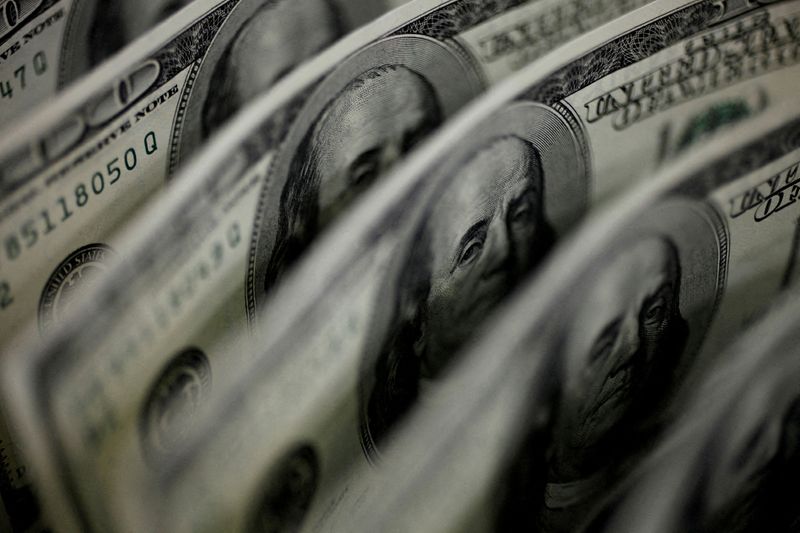Forex
Dollar edges higher, buoyed by monetary policy imbalance

By Laura Matthews
NEW YORK (Reuters) -The dollar edged higher against other major currencies on Friday, hitting a fresh eight-week high against the yen as data showed a strong U.S. economy and as the Federal Reserve’s patient approach to interest-rate cuts stood in contrast to more dovish peers.
U.S. business activity hit a 26-month high in June amid a rebound in employment while price pressures subsided considerably, suggesting that a recent slowdown in inflation was likely to be sustained.
The , which measures the currency against six others, was up 0.2% at 105.81 in New York afternoon trading. It had spiked 0.41% overnight, erasing declines for the week, following a second successive rate cut at the Swiss National Bank and hints from the Bank of England of a reduction in August.
Thierry Wizman, global FX & rates strategist at Macquarie, in New York sees continued dollar strength as political uncertainty in Europe could eventually sap business and consumer confidence.
“Even if the euro or sterling were to rally, I can’t imagine it being a strong or durable rally,” said Wizman. “I’d be more inclined to sell into that rally and then cover at a lower point.”
For Matt Weller, head of market research at StoneX, Grand Rapids, Michigan, the Japanese yen will be important for FX traders to watch next week.
The U.S. Treasury on Thursday added Japan to a list of countries it is monitoring for potential labelling as a currency manipulator, “a diplomatic warning against additional intervention”, said Weller. China is among others on the list.
The yen has been under pressure after the Bank of Japan’s decision last week to hold off on reducing bond-buying stimulus until its July meeting. The dollar last traded 0.4% stronger at 159.59 yen, after hitting a session high of 159.62.
The BOJ, at the behest of Japan’s finance ministry, spent some 9.8 trillion yen ($61.64 billion) to pull the currency out of a 34-year trough of 160.245 per dollar, reached on April 29.
Japan’s top currency diplomat Masato Kanda said on Friday that Tokyo stands ready to take further “resolute” action against “speculative, excessive volatility”.
Meanwhile, the dollar held its near five-week high against sterling, which remains flat at $1.2649, around its lowest since mid-May. The BoE kept rates on hold this week, but some policymakers said the decision not to cut was “finely balanced”.
Data on Friday showed UK retail sales rose by more than expected in May, in large part because of milder weather.
A separate report showed British business growth slowed to a seven-month low in June, weighed down by nerves about the July 4 general election.

The euro was also flat at $1.0697 after a series of preliminary surveys for June showed service-sector activity in France contracted this month, while activity across the German economy slowed.
“Overall it seems like the FX market is hesitating to push for any major moves before the French election in late June/early July, as that remains the biggest focus for European FX in particular,” said Erik Nelson, macro strategist at Wells Fargo in London.

 Forex3 years ago
Forex3 years agoForex Today: the dollar is gaining strength amid gloomy sentiment at the start of the Fed’s week

 Forex3 years ago
Forex3 years agoUnbiased review of Pocket Option broker

 Forex3 years ago
Forex3 years agoDollar to pound sterling exchange rate today: Pound plummeted to its lowest since 1985

 Forex3 years ago
Forex3 years agoHow is the Australian dollar doing today?

 Cryptocurrency3 years ago
Cryptocurrency3 years agoWhat happened in the crypto market – current events today

 World3 years ago
World3 years agoWhy are modern video games an art form?

 Commodities3 years ago
Commodities3 years agoCopper continues to fall in price on expectations of lower demand in China

 Economy3 years ago
Economy3 years agoCrude oil tankers double in price due to EU anti-Russian sanctions





















